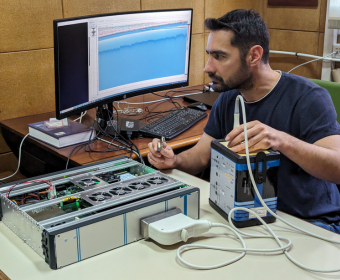Edge computing hardware architectures for AI in scientific applications
FIRST CALL
APPLICATION ID: ALL6
What we are looking for:
We are seeking innovative research proposals aimed at developing low-power, high-speed computational systems for scientific and industrial applications. The project team, experienced in FPGA implementations with low-power consumption, aims to pioneer state-of-the-art AI applications for fast big data analysis, potentially leading to technology transfer in various fields with fast real-time processing needs.
The context:
The advancement of hardware technologies has opened new frontiers in computational systems, especially in scientific and industrial applications. Our research area is centered in harnessing advanced hardware for efficient, low-power, and high-speed computational processes. This is crucial in applications like Signal and Image Reconstruction, and Artificial Intelligence (AI), where the demand for sustainable computational solutions is ever-growing. Such an approach is particularly relevant in environments like the Large Hadron Collider (LHC) at CERN, and in real-time signal processing applications for medical and industrial echography. In both scenarios processing vast amounts of data quickly and efficiently is paramount.
The problem to address:
The primary challenge is developing computational systems that can handle the demands of fast, big data analysis while remaining sustainable and energy-efficient. This involves not only optimizing current hardware but also innovating new solutions that can significantly reduce power consumption without compromising on speed or accuracy, especially in AI applications.
Objectives:
- Develop work methodology to design and train neural networks with the ultimate goal that the inference process is carried out on FPGA devices.
- Investigate the application of such methodology in environments with high data throughput like the LHC at CERN or in medical devices such as ultrasounds.
Expected Outcomes:
- In particular, that can be applied in environments with high data throughput like the LHC at CERN or in medical devices such as ultrasounds.
- Develop an application embedded in the ultrasound acquisition electronics capable of detecting lesions in real time for lung ultrasound imaging and industrial NDT applications.




